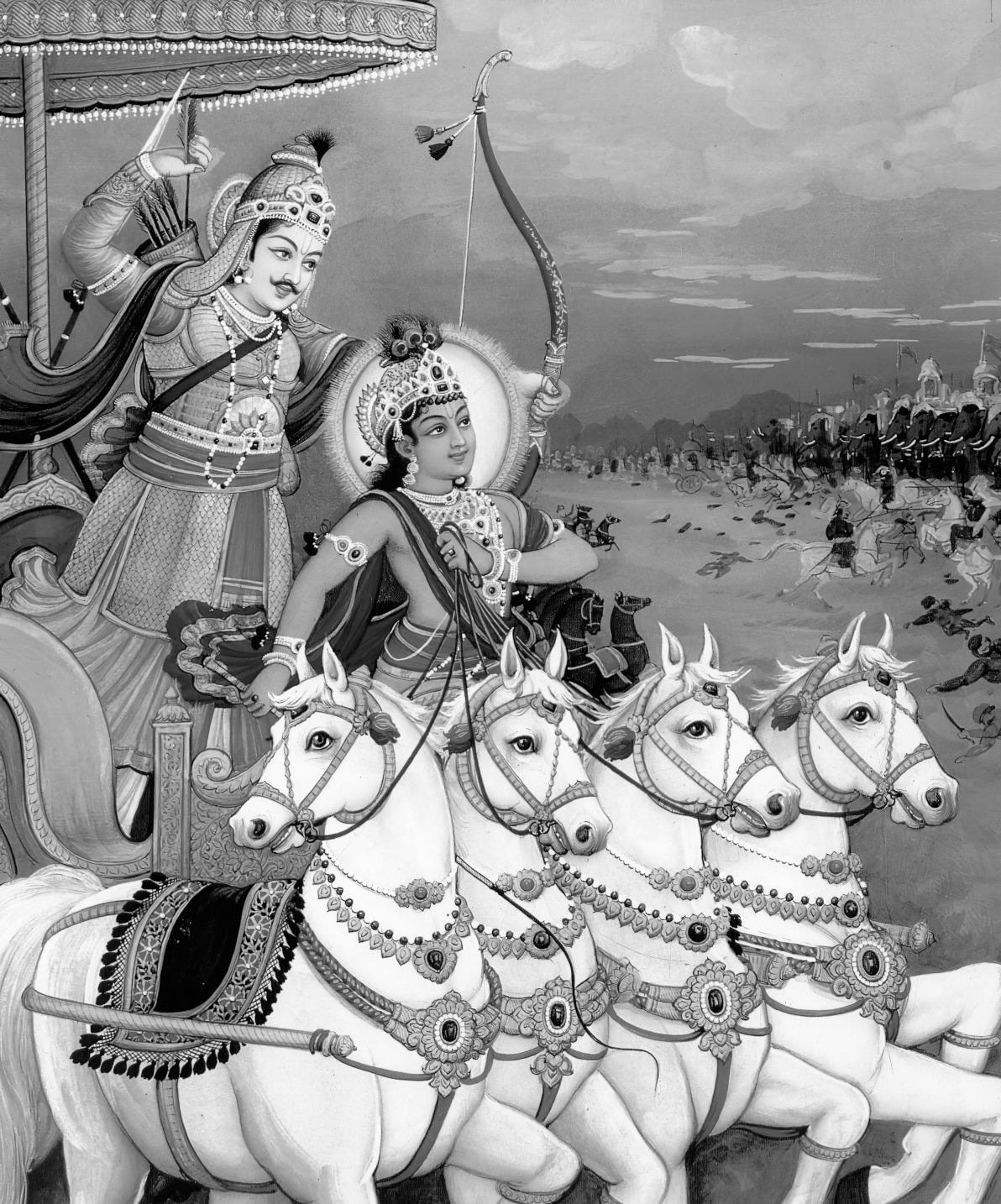Chapter Two: Contents of the Gītā Summarized (Sānkhya-yoga)
In the second chapter, Krsna explains both karma-yoga and jñāna-yoga through logical reasoning; hence, this chapter is called "sānkhya-yoga". The second chapter is considered a summary of the text.
« The Song of God: An in-depth study of the Bhagavad-gītā (Volume 1)
Srila Bhaktivinoda Ṭhākura describes the second chapter of the Bhagavad-gītā as a summary of the entire text. The three main topics of the Gītā are karma-yoga, jñāna-yoga, and bhakti-yoga. Karma-yoga is the process of connecting our practical actions to the service of the Lord, while jñāna-yoga means the cultivation of transcendental knowledge as a process of connection with Him. Although defined as separate processes, they are better understood as progressive steps on the staircase leading to bhakti-yoga—the ultimate process of uncovering our original attitude of devotional service to the Lord. As Krsna explains, one who achieves perfection on either the path of karma-yoga or jñāna-yoga achieves the result of both, which is elevation to the path of bhakti-yoga, pure devotional service.
In the second chapter, Krsna explains both karma-yoga and jñāna-yoga through logical reasoning; hence, this chapter is called "sānkhya-yoga". The term sānkhya is associated with two distinct philosophical systems—one taught by Lord Kapila, the son of Devahūti, and the other by the atheistic Kapila. However, the Sāṅkhya that Kṛṣṇa presents here is a third category, distinct from both. In this context, Sāṅkhya simply means "systematic knowledge".
« The Song of God: An in-depth study of the Bhagavad-gītā (Volume 1)


